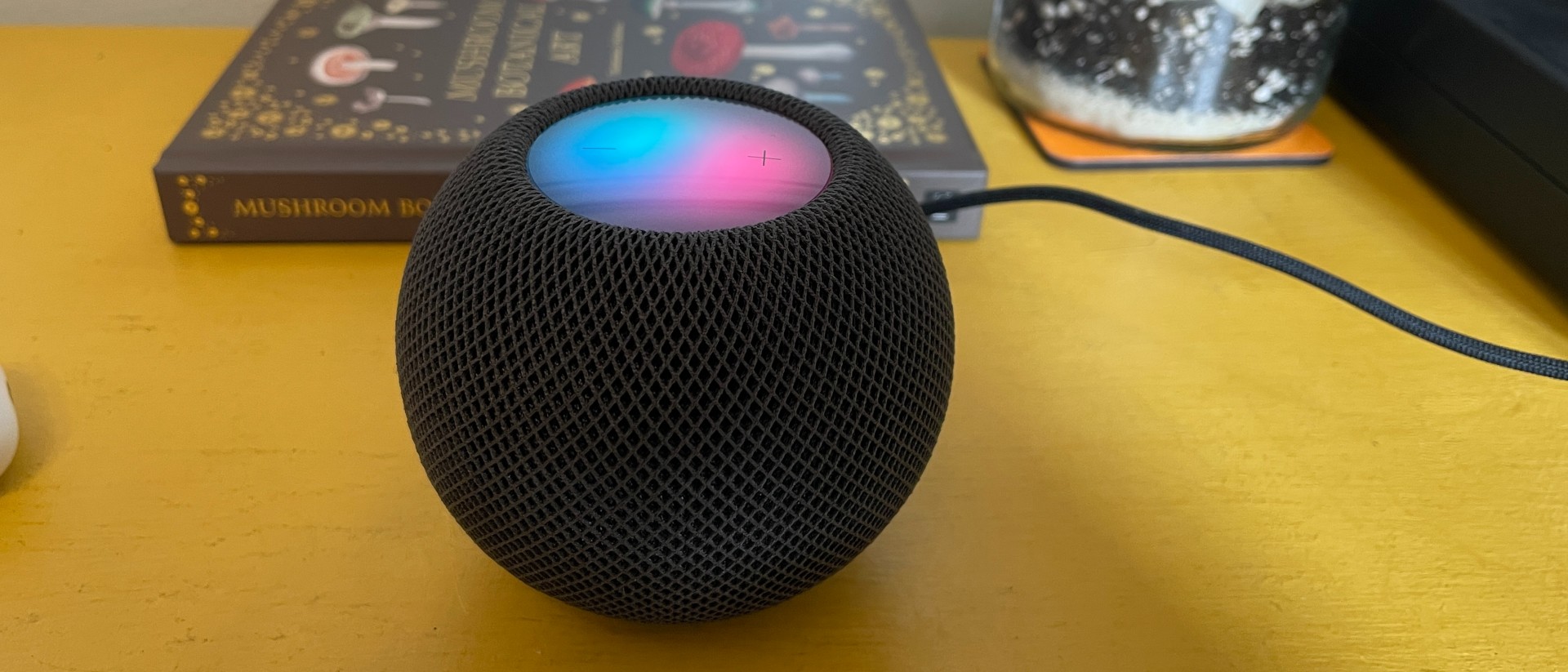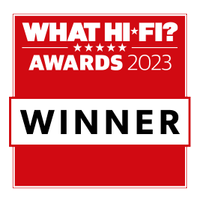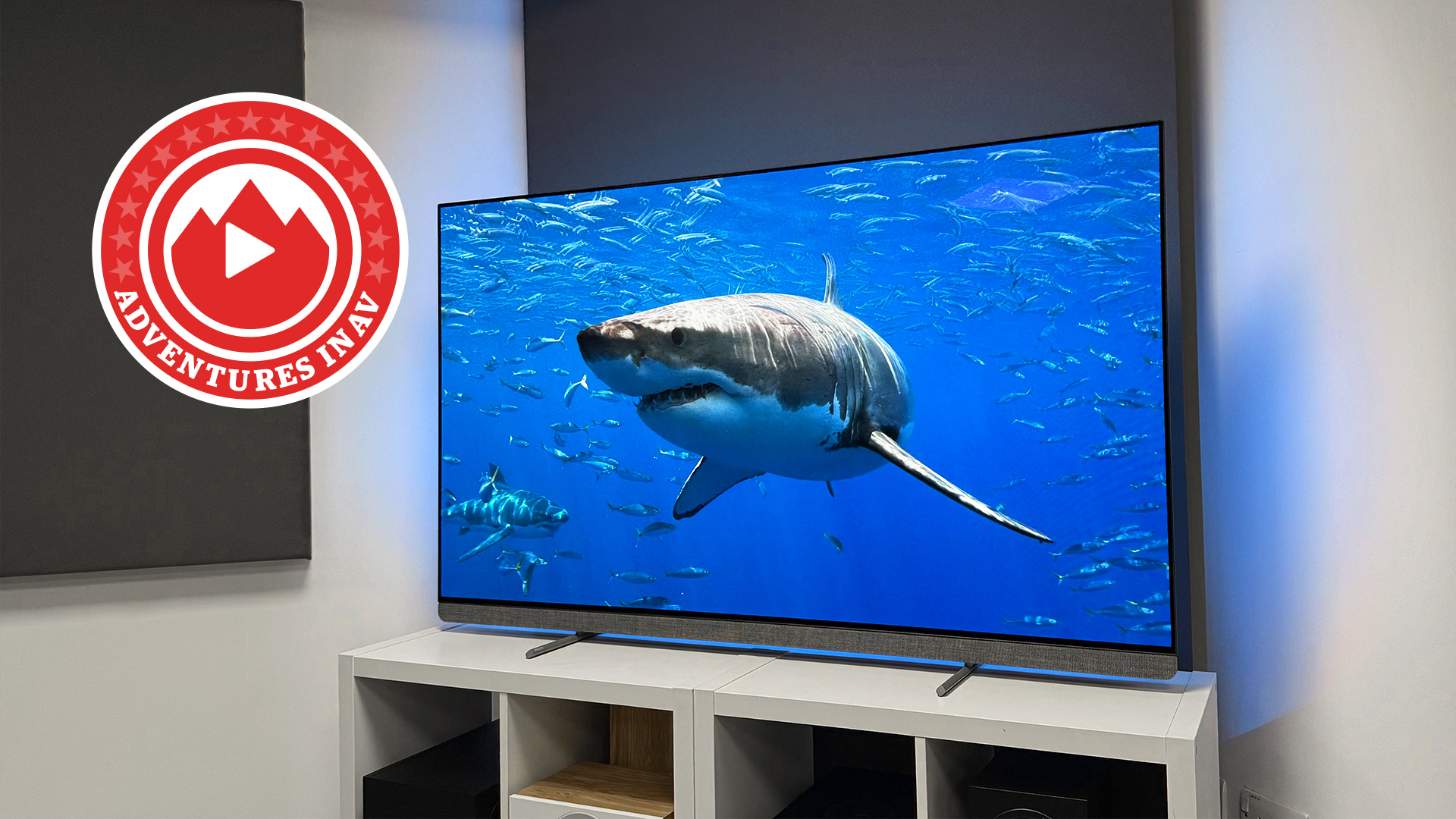What Hi-Fi? Verdict
It’s much smaller and more affordable than expected, but the most surprising thing about the HomePod Mini is its superb sound
Pros
- +
Sophisticated, engaging sound
- +
Substantial smart skills
- +
Impressive music discovery
Cons
- -
Limited third-party service support
- -
Lacks a full control app
Why you can trust What Hi-Fi?
The Apple HomePod Mini has been a long time coming. When the original HomePod was announced back in 2018, it was assumed that it would be the first in a large family of smart speakers. Of course, it took even longer for the next-gen HomePod 2 to appear, but it didn't take long for people to ask for a smaller, more affordable model.
It took almost three years for that smaller model to arrive – that’s aeons in the world of tech – so, has the wait been worth it? It sure has: the HomePod Mini outperforms its size and price like no other smart speaker you can buy. Even with the advent of its bigger sibling HomePod 2 and new models such Sonos's Era 100 feature-packed smart speaker, the Mini remains a charming, affordable buy that's easy to recommend.
Launched at £99 / $99 / AU$149, it's also one of the cheapest products that Apple has ever produced, which makes it all the more appealing. That's quite a lot of features and power you get for a price tag that's cheaper than Apple's own AirPods.
Build
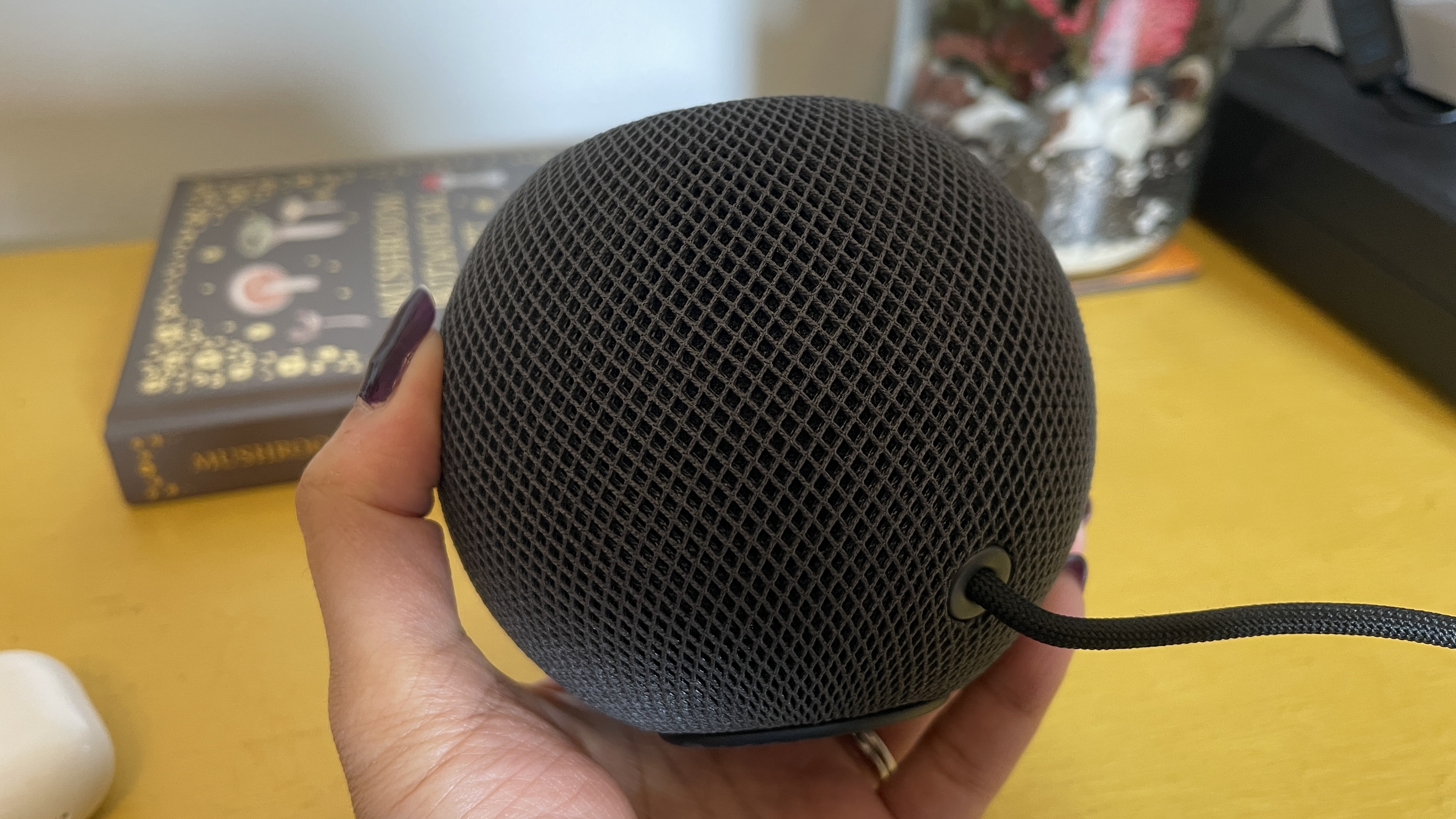
The HomePod Mini really is small. At just 8.4cm tall and 9.8cm wide, it’s roughly half the size of the similarly priced and similarly spherical Amazon Echo (4th gen). In fact, it’s even smaller than the Amazon Echo Dot (5th gen), albeit double the price.
The Mini originally came in simple white or space grey finishes but has since added more colourful options (orange, blue and yellow) which add an element of fun that Apple's speaker and AirPods ranges normally don't have. It's wrapped in a seamless fabric mesh that was apparently chosen as much for its acoustic properties as for its stylishness. The whole design gives the impression of a tiny, woven plant pot – in a good way. It’s pretty and unobtrusive, and will happily fit in any room of the house.
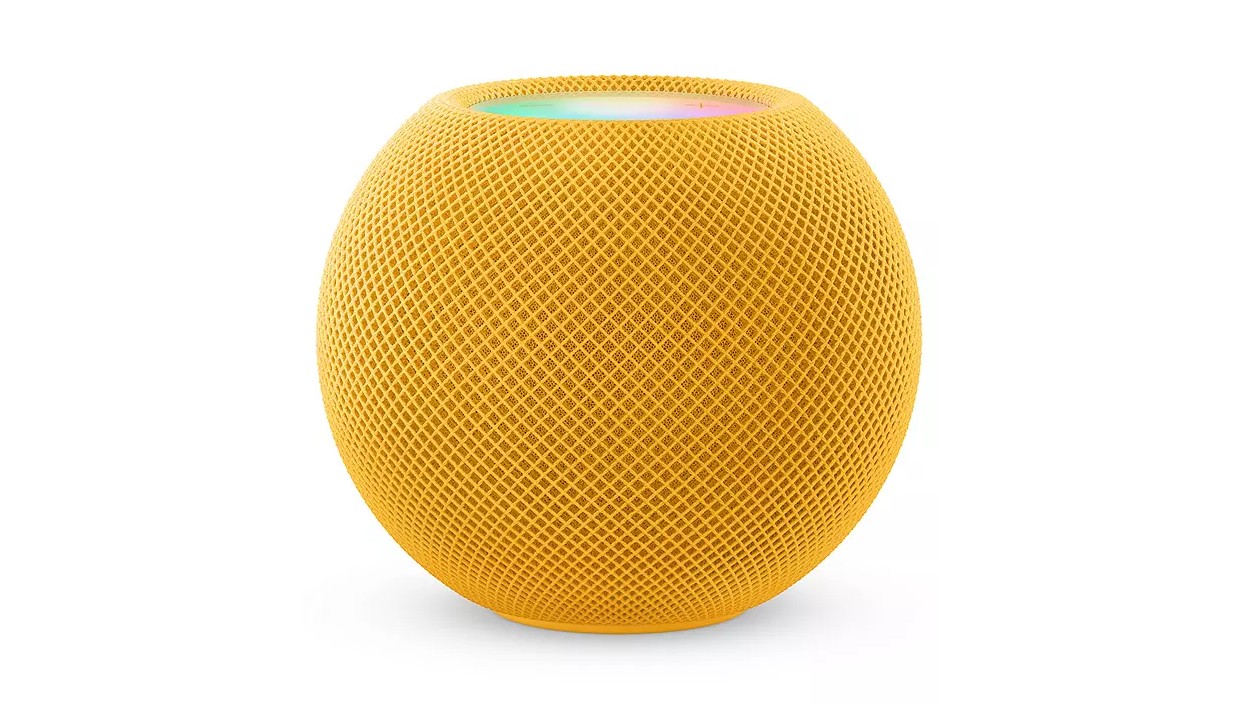
Finishes x2
Voice assistant Siri
Bluetooth No
AirPlay Yes
Dimensions (hwd) 8.4 x 9.8 x 9.8cm
Weight 345g
The glass panel on the top is opaque when the speaker is inactive, but a swirling orb of coloured light appears when Siri is listening or processing, while a smaller white orb gently oscillates as music plays. It’s a classy and alluring touch beyond anything you’ll get from any other similarly priced speaker. It makes the wraparound lightstrip of the Amazon Echo look as sophisticated and seductive as a set of traffic lights.
There are no physical buttons on the HomePod Mini. When the top panel is lit, it reveals otherwise near-invisible plus and minus symbols that, when touched, raise or lower the volume. A tap of the centre of the panel will pause or resume your music, a double-tap skips forward and a triple-tap skips back. A long press, meanwhile, sets Siri to listening mode. At its core, though, this is designed as a hands-off affair.
The latest hi-fi, home cinema and tech news, reviews, buying advice and deals, direct to your inbox.
There are no physical audio connections, either, nor does it support Bluetooth for playback. Even the power cable is fixed, terminating at the other end to a USB-C plug that slips into the same 20W wall charger that’s bundled with the company’s higher-end iPads. If you’re wondering whether that means the HomePod Mini can be powered off the USB-C socket of a Mac; it can’t. At least, it wouldn’t work when plugged into our MacBook Pro, with an angry-looking pulsating orange light indicating the HomePod Mini’s displeasure at being asked to perform on an underpowered port.
Features
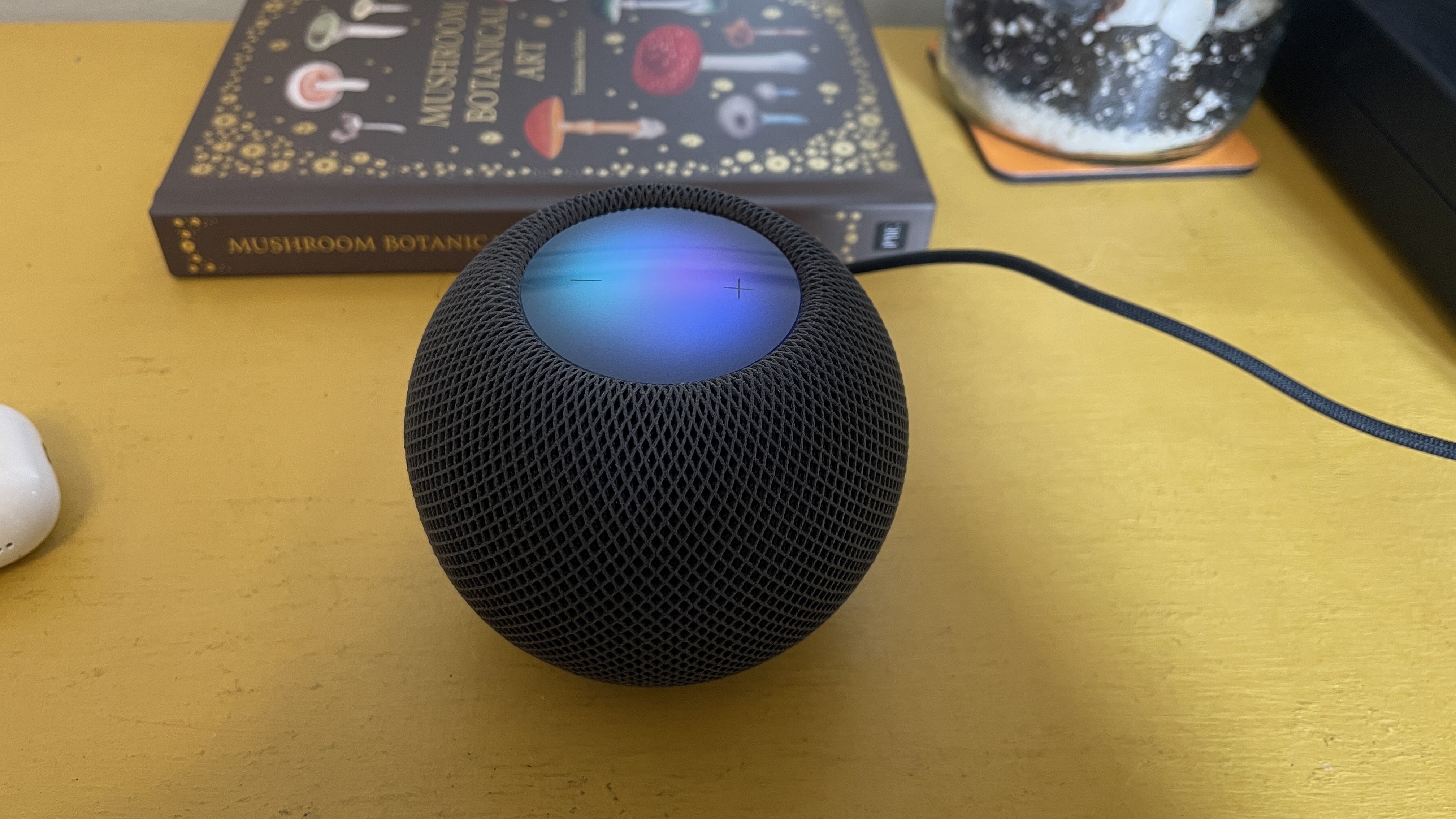
Within the HomePod Mini’s spherical, mesh-covered frame is a single, Apple-designed full-range driver that fires sound downwards and out of the 360-degree waveguide around the bottom. The driver is held by a suspension system to reduce distortion, and it’s flanked by two passive radiators designed to help create a bigger, weightier sound.
There are four microphones built into the chassis: three that specifically listen out for the 'Hey Siri' command and a fourth that uses echolocation to ensure you can be heard over background noise or loud music. Certainly, the HomePod Mini has no issue hearing or comprehending us at any point during testing.
Also impressive is the way Siri always seems to know which device is being addressed, sensing when an instruction is to the HomePod Mini on the other side of the room even when an iPhone is lying much closer. This is particularly clever compared with Alexa – we find that questions directed at an Echo speaker just a couple of feet away are often answered by a different speaker in another room.
The brain of the HomePod is Apple’s own S5 chip, also found in the Apple Watch Series 5 (2019) and Apple Watch SE. In the HomePod Mini, it enables computational audio. Apple claims it analyses and optimises the performance over 180 times per second, based on the position of the speaker and what’s being played.
Of course, the HomePod Mini also uses its power for a variety of Siri-powered smart functions, from controlling any HomeKit-compatible devices in your house, to setting timers and alarms, creating reminders and shopping lists, and sending messages and making phone calls. It can also now make announcements to one or all other HomePods in the house using the new Intercom feature. And that’s just the tip of the iceberg.
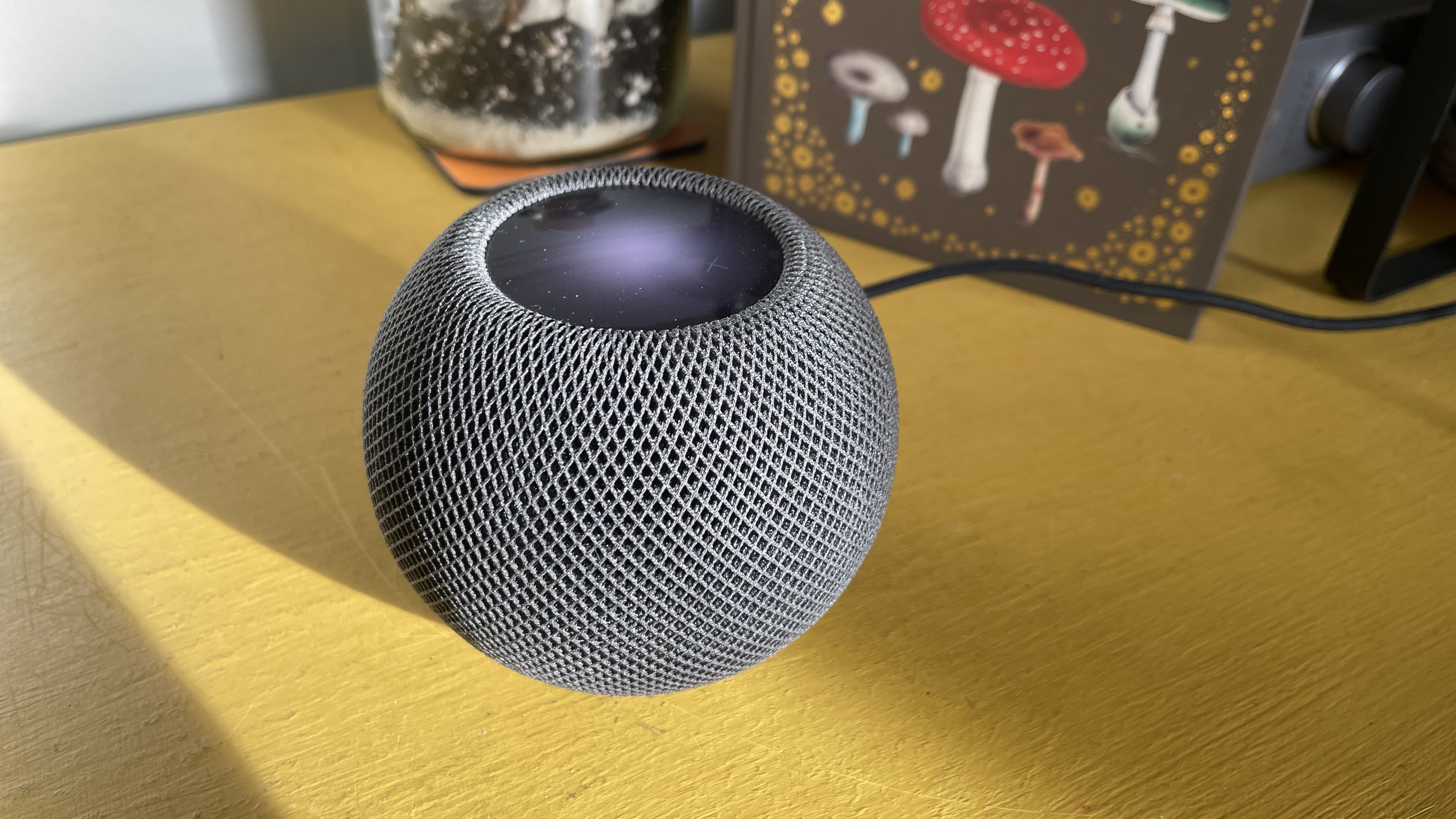
Siri’s real strength in the context of the HomePod Mini (just as it was with the original HomePod and with the new HomePod 2) is its music curation with an Apple Music subscription. After a short period of learning, it responds to the phrase “play something I'll like” not by streaming your most played track of the last few weeks, but by playing something that you may have never listened to before but is a good fit for what you often do listen to. If you’re not in the mood for Siri’s first suggestion, saying “play something different” will switch genres while remaining within your general tastes. It’s a really powerful way to discover new music, and Alexa is nowhere near as good at it.
Where the HomePod Mini falls back a little is in its support for third-party services. Things have certainly opened up somewhat since the original HomePod was launched – most notably in the addition of radio stations via TuneIn – but there’s still a long way to go. Spotify integration is top of the wishlist, and we’d also like to see Tidal and Deezer there. BBC Sounds is a must for the UK, too, as you can’t currently access BBC radio stations using Siri commands. We say “Hey Siri, play BBC Radio 5 Live”, and the Mini starts playing Five-O by James. It's a lovely song, but it’s not the Champions League football we were after.
Apple is at least taking steps in the right direction – Pandora and Amazon Music are being added – but there’s no guarantee that the service you want or already use will be added further down the line. In short, this is still a device aimed at those already embedded in the Apple ecosystem: not only do you require an iOS device to set up the HomePod Mini, you also need to be a regular user of many of its services, particularly Apple Music, in order to really get the most out of it.
That isn’t to say that it’s impossible to play non-Apple Music music on the HomePod Mini. AirPlay 2 integration means that audio can be sent from myriad iOS apps, including Spotify and Tidal. The slight issue there is that AirPlay 2 works like Bluetooth, using your iOS device as a source, rather than Chromecast, which uses your phone as a way to control music that the speaker then streams directly from the cloud. There’s nothing particularly wrong with the AirPlay/Bluetooth method, but it does have implications for sound quality and battery life. Sonos, in comparison, offers wi-fi streaming alongside the AirPlay 2 and Bluetooth options in the pricier Era 100; not only does it offer greater flexibility, but it also means you can stream hi-res 24-bit audio over wi-fi from supported services. Apple has since unlocked the Mini's ability to stream 24-bit/48kHz Lossless audio, but this is restricted to compatible tracks from Apple Music.
Regularly switching between Siri and AirPlay can make for a slightly disjointed user experience, too. We can’t help but feel that Apple could do with a dedicated HomePod app that integrates all available services and makes all content searchable and then combinable in queues, much in the way that Sonos has. Right now, control of the HomePod 2 and HomePod Mini is built into the Home app, but you’ll find only rudimentary controls for music (play, pause, volume etc) alongside a handful of settings.
Sound
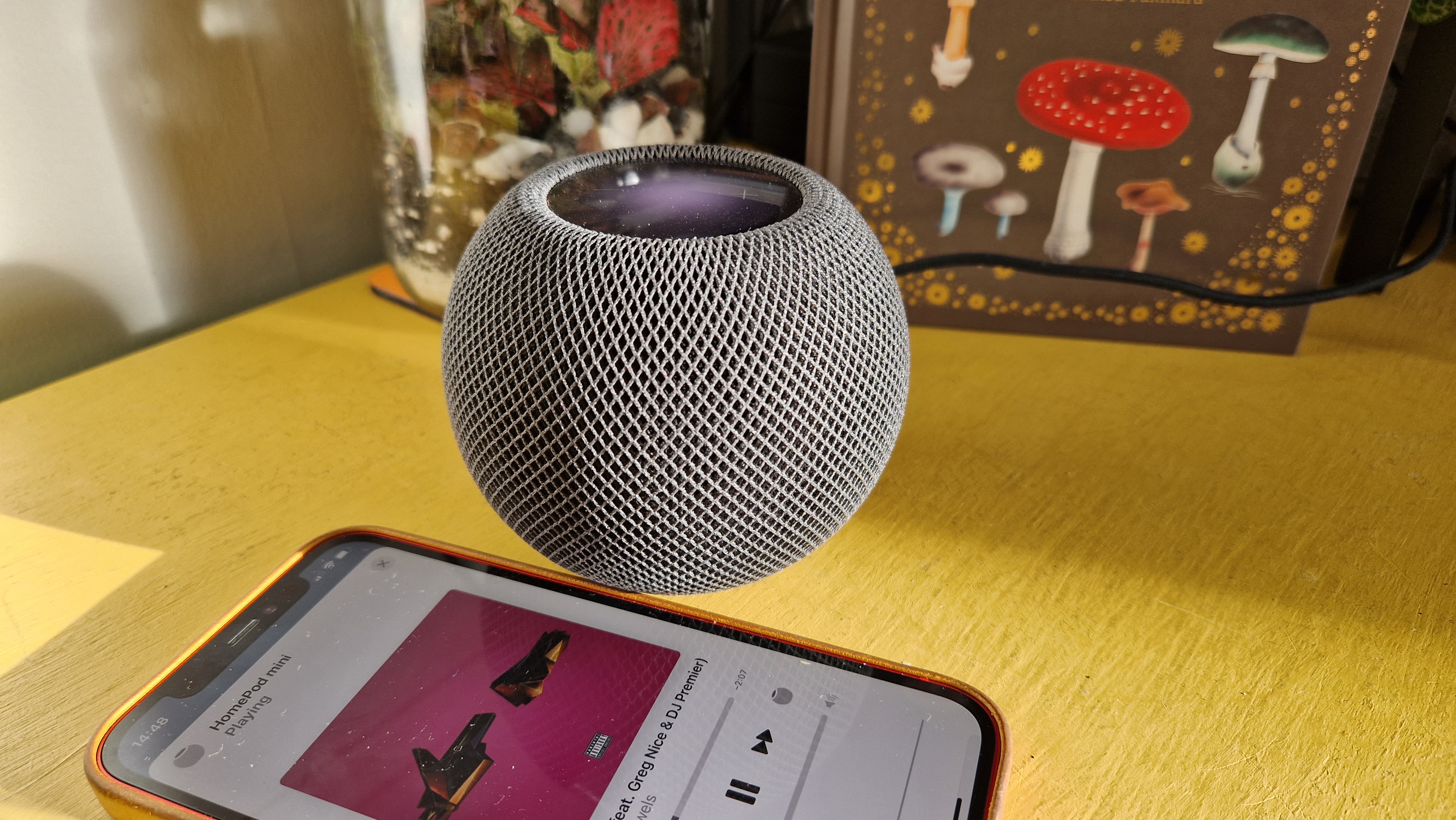
From the moment we start playing music, it’s clear that the HomePod Mini comfortably outperforms its size and price. It goes much louder than expected – even 75 per cent volume is louder than we imagine most people will regularly want to go in an average-sized living room. But, no matter how much you push it, the HomePod Mini never shows any sign of strain. It’s clean and composed at all volumes.
While a bigger speaker, such as the Amazon Echo, will produce deeper bass, the HomePod Mini doesn’t sound bass-light in its own right. In fact, it’s more solid and authoritative than a speaker this small has any right to be, and its bass is seamlessly integrated into the overall presentation. There’s excellent overall tonal balance and consistency, with no frequencies over-exaggerated.
It’s rhythmic and driven, too. We play Hole In The Earth by Deftones and the Mini delivers plenty of the requisite power and urgency. There’s also enough dynamic capability to convey the track’s shifts from bass-led groove to swirling bridge and hammering crescendo. The quieter moments are properly quiet (and lots of speakers don’t do quiet effectively), leaving the space open for the next big hit.
Like the bigger HomePod 2, the Mini has an innate ability to get to the core of a track, delivering it as faithfully as its stature allows. That’s a rare ability, particularly for a smart speaker at this price. The performance from the new Amazon Echo simply isn’t as engaging. It’s not as immediate or driving, and a lot of that comes down to it being less well tonally and rhythmically organised.
We switch to Lane 8’s Nothing You Can Say and the bassline of the stripped-back track bubbles along with a surprising degree of extension. The bass here is supposed to be pronounced, underpinning the track, but without drowning out Lucy Stone’s vocals. That’s just how the HomePod delivers it. Each element, from the electric drums to the twinkling keyboard, is easy to focus on and enjoy, with no one strand coming at the expense of any other.
Once again, the HomePod Mini impresses in its ability to deliver the music as intended. The early beat from the kick drum is punchy with plenty of texture. You can tell it’s a live instrument, included along with the maraca to contrast the electronic effects of the track.
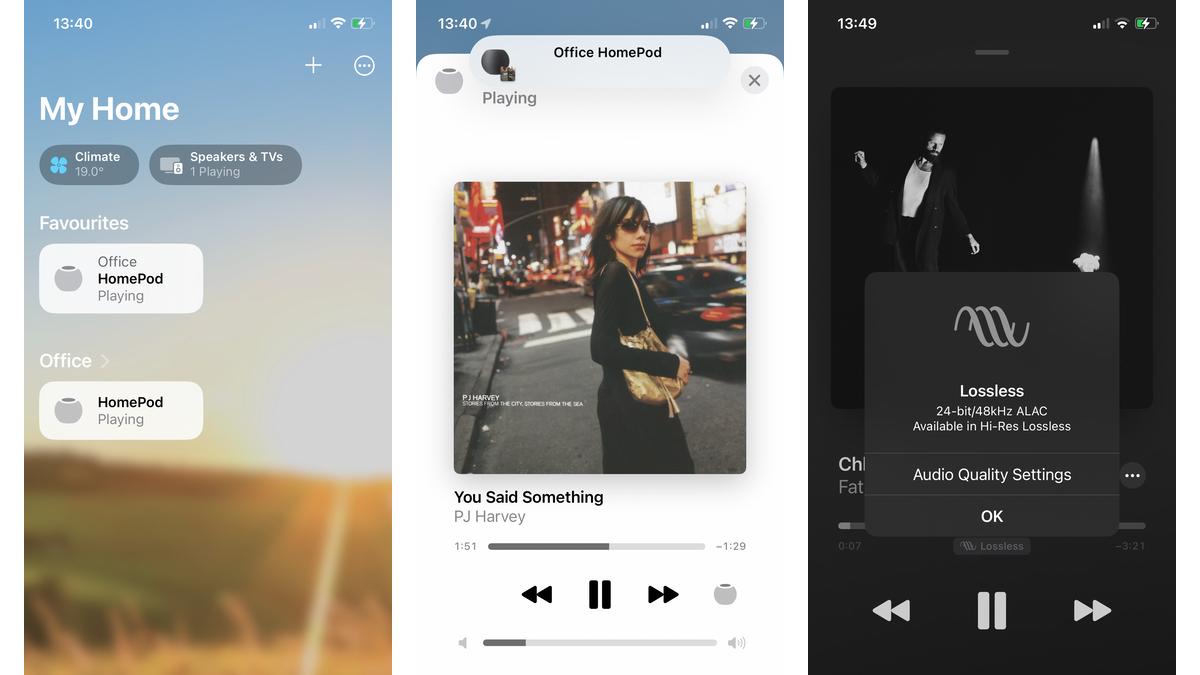
What’s also impressive about this delivery is how well it’s projected. We play the same track on the Amazon Echo and it’s as though Stone is singing from a little, spherical cell. The HomePod Mini projects sound and fills the space far more effectively, removing itself as an object from the soundstage to a greater degree. The presentation is consistent from all around the room, too, with the Mini delivering on its promise of 360-degree sound.
Playing the sparse, live recording of The Road soundtrack by Nick Cave and Warren Ellis, the HomePod Mini proves adept at presenting the subtle details and low-level dynamics necessary to convey the raw emotion of the track. This level of nuance is very rare at this level.
Saying, “Hey Siri, play something different”, offers up Paolo Nutini’s Coming Up Easy and, despite the HomePod Mini not being as outright bassy as bigger speakers, there’s still an authentic fullness to Nutini’s voice, along with plenty of texture, passion and dynamic flow. Getting voices right at this level is hard, but the Mini manages it marvellously.
Finally, we use the Home app to combine two HomePod Minis in a stereo pair. This predictably makes for a much bigger, more solid and more room-filling sound. Bass weight is increased and the Mini’s general qualities in terms of punch, clarity, dynamism and tonal balance are only improved by the pairing. There’s really no downside to creating a stereo pair.
What's more, the HomePod Mini plays ball with Apple's spatial audio with Dolby Atmos tracks, so long as it is connected to an Apple TV 4K. The HomePod Mini now also supports lossless audio and Dolby Atmos spatial audio tracks, meaning owners will be able to play compatible tracks in up to 24-bit/48kHz quality from Apple Music.
Verdict
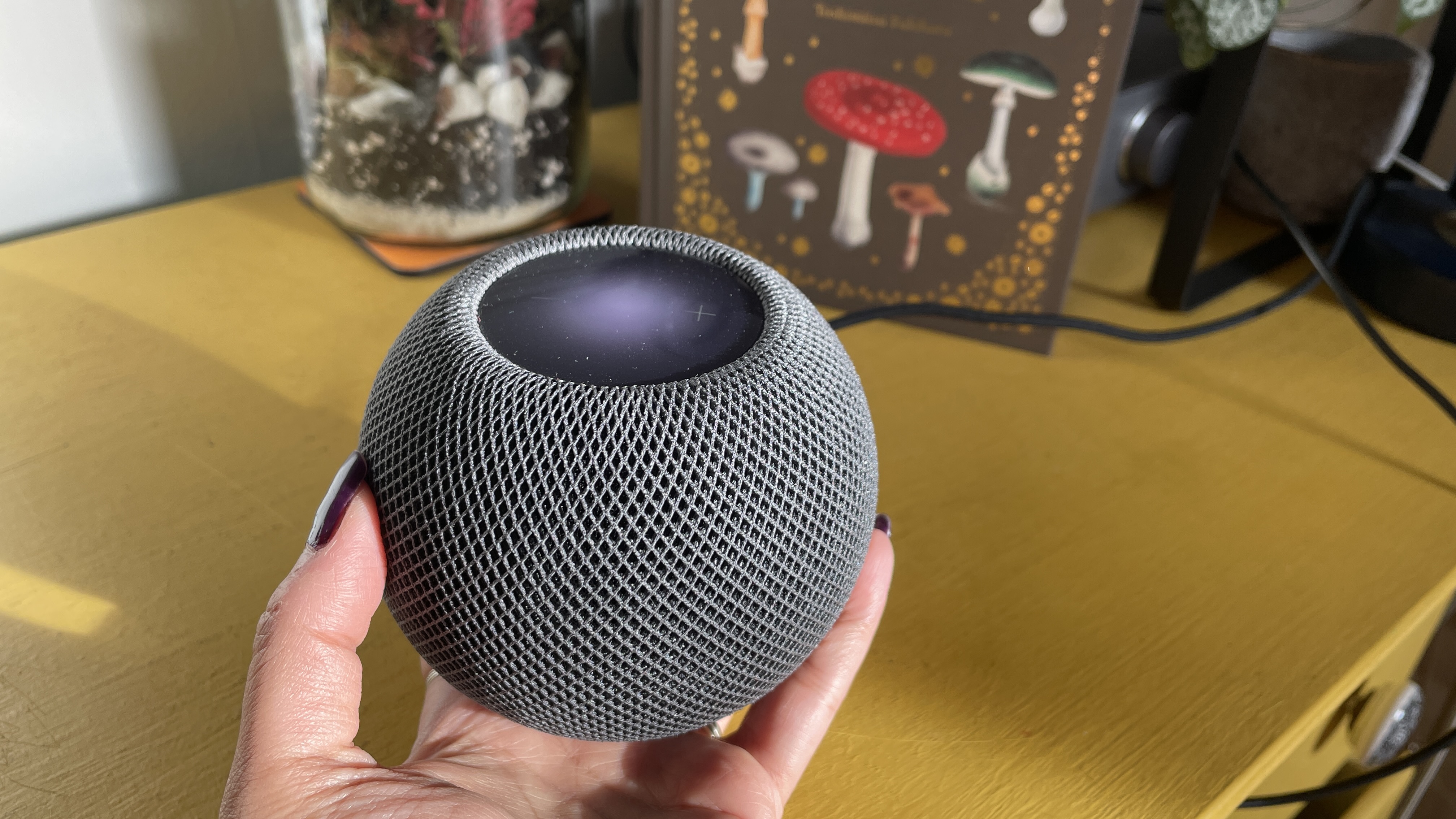
Apple made us wait quite a while when launching both the original HomePod and the new HomePod 2, but the HomePod Mini that appeared in between has really taken us by surprise.
For a speaker this small and this inexpensive, its audio performance is startling. Naturally for a speaker of its size and price, the HomePod Mini has its limits. Still, it quite frankly embarrasses its direct competition with the sophistication and maturity of its sound. It gets to the core of your music, ensuring everything it plays is engaging and interesting.
It’s also affordable enough to be bought in quantity, small enough to be placed in any room of the house, laden with smart skills and has an uncanny ability to introduce you to new music you’ll love. All of which makes it a deeply impressive proposition indeed.
Review published: 2021. Review updated: November 2024.
SCORES
- Sound 5
- Features 4
- Build 5
MORE:
Read our full Apple HomePod 2 review
Looking for something different? Here are our best wireless speakers
Apple HomePod 2 vs HomePod Mini: what are the differences?
Browse the latest wireless speaker deals
Apple Music lossless: which devices will (and won't) play lossless and Spatial Audio
What Hi-Fi?, founded in 1976, is the world's leading independent guide to buying and owning hi-fi and home entertainment products. Our comprehensive tests help you buy the very best for your money, with our advice sections giving you step-by-step information on how to get even more from your music and movies. Everything is tested by our dedicated team of in-house reviewers in our custom-built test rooms in London, Reading and Bath. Our coveted five-star rating and Awards are recognised all over the world as the ultimate seal of approval, so you can buy with absolute confidence.
